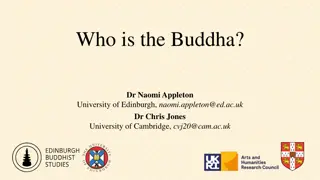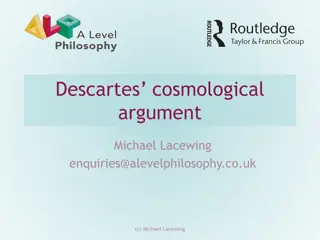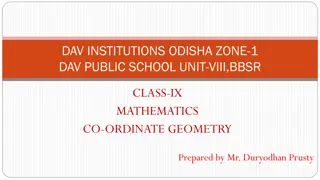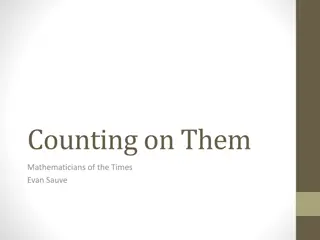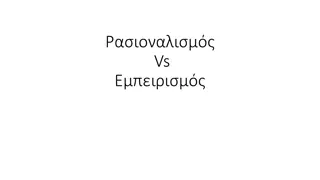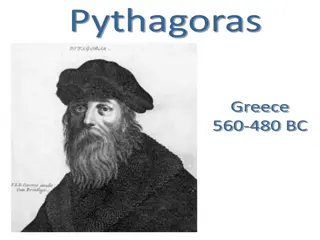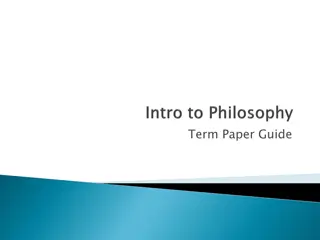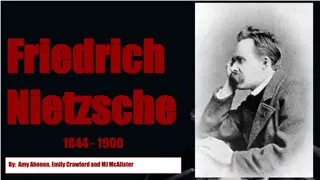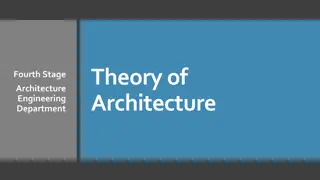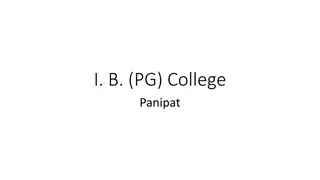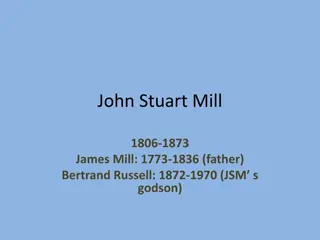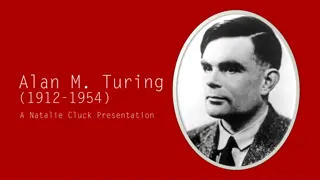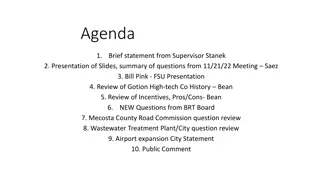René Descartes: Philosopher and Mathematician Extraordinaire
René Descartes, known as the Father of Modern Philosophy, made significant contributions to both philosophy and mathematics. Born in 1596 in France, Descartes received a Jesuit education and later worked as a Corps of Engineers applying mathematics to practical applications. His philosophical works include "Meditations on First Philosophy" and "Principles of Philosophy," while in mathematics, he introduced Cartesian Coordinates and the Rule of Signs technique. Descartes' famous quotes highlight the importance of critical thinking and wisdom. His discoveries in mathematics include rediscovering Thabit ibn Qurra's formula for amicable numbers.
Download Presentation

Please find below an Image/Link to download the presentation.
The content on the website is provided AS IS for your information and personal use only. It may not be sold, licensed, or shared on other websites without obtaining consent from the author.If you encounter any issues during the download, it is possible that the publisher has removed the file from their server.
You are allowed to download the files provided on this website for personal or commercial use, subject to the condition that they are used lawfully. All files are the property of their respective owners.
The content on the website is provided AS IS for your information and personal use only. It may not be sold, licensed, or shared on other websites without obtaining consent from the author.
E N D
Presentation Transcript
RenDescartes I think, therefore, I am I think, therefore, I am! ! Ren Descartes Done By: Aysha Jamal Ali Rawan Yousif Alsabt Latifa Yousif Alqahtan Shaikha Nabeel Alshurooqi 20124431 20121453 20112108 20121629 Year 3 - Section 4 2014 - 2015
Outline Introduction His education and jobs. Contributions A. Philosophy B. Mathematics Rule of signs technique
Introduction Date of birth: March 31st, 1596 Place of birth: La Haye France Religion: Catholic Died: February 11th , 1650
His Education and Jobs His Education and Jobs In 1606, at ten years old, hew was sent to Jesuit In 1606, at ten years old, hew was sent to Jesuit college of La Fl che and studied until 1614. college of La Fl che and studied until 1614. In 1615, He entered theUniversity of Poitiers, and in 1616 he he received his Baccalaureate and License in In 1615, He entered theUniversity of Poitiers, and in 1616 he he received his Baccalaureate and License in Canon & Civil Law. Canon & Civil Law. In 1618, he started working to the army of Prince Maurice of Nassau as Corps of Engineers . He applied his mathematics to structures machines In 1618, he started working to the army of Prince Maurice of Nassau as Corps of Engineers . He applied his mathematics to structures machines aimed at protecting and assisting soldiers in battle. aimed to protect and assist soldiers in battle.
Contributions A. Philosophy He was Known as Father of Modern Philosophy Some of his books in Philosophy: Meditations on first philosophy (1641) Principles of philosophy (1644)
Famous Quotes: 1. It is not enough to have a good mind; the main thing is to use it well. 2. Doubt is the origin of wisdom
B. Mathematics Cartesian Coordinates. Cartesian Coordinates. Rule of signs Rule of signs technique technique Problem Problem solving for geometrical solving for geometrical calculus. calculus. Understand Understand the connection between the connection between curves construction and its algebraic curves construction and its algebraic equation equation. .
B. Mathematics Re-discovered Thabit ibn Qurra's general formula for amicable amicable numbers numbers: Amicable pair 9,363,584 and 9,437,056 (which had also been discovered by another Islamic mathematician, Yazdi, almost a century earlier).
Rule of signs Rule of signs technique technique Rule of signs Rule of signs technique is used to find the possible positive technique is used to find the possible positive and negative roots (zeros) for Polynomial without solving or and negative roots (zeros) for Polynomial without solving or drawing it drawing it. . Example Example1 1: Finding the positive : Finding the positive zeros : zeros : F(x) = -2x+1 1. Arrange the terms of the polynomial in descending order of exponents. 2.Count the number of sign changes. 1 1 3. There is one sign changes in the polynomial, so the possible number of positive roots of the polynomial is 1
Rule of signs Rule of signs technique technique Example Example1 1: Finding the negative : Finding the negative zeros : zeros : F(-x) = -2(-x)+1 1. Arrange the terms of the polynomial in descending order of exponents. F(-x) = 2x+1 No sign change No sign change 2.Count the number of sign changes. 3. There is no change in signs, therefore there is no possible negative zeros.
Rule of signs Rule of signs technique technique Example Example1 1: Finding the positive : Finding the positive zeros : zeros : F(x) = -2x2+ 5x - 3 1. Arrange the terms of the polynomial in descending order of exponents. 2.Count the number of sign changes. 1 1 2 2 3. There are 2 sign changes in the polynomial, so the possible number of positive roots of the polynomial is 2
Rule of signs Rule of signs technique technique Example Example1 1: Finding the positive : Finding the positive zeros : zeros : 1. Arrange the terms of the polynomial in descending order of exponents. 2.Count the number of sign changes. 1 1 2 2 3 3 3. There are 3 sign changes in the polynomial, so the possible number of positive roots of the polynomial is 3 or 1 It is less than the 3 by an even integer (3 2)=0
Rule of signs Rule of signs technique technique Example Example 2 2: Finding the negative : Finding the negative zeros : zeros : 1. Arrange the terms of the polynomial in descending order of exponents. No sign change No sign change 2.Count the number of sign changes. 3. There is no change in signs, therefore there is no possible negative zeros.
Rule of signs Rule of signs technique technique Exercise: Find the possible positive and negative zeros in Exercise: Find the possible positive and negative zeros in the Polynomial the Polynomial. . 1. 1. F(X) = x F(X) = x3 3 + + 3 3 x x2 2 x x x x4 4 2 2 2. 2. F(X) = x F(X) = x3 3 x x2 2 14 14 x x + + 24 24
References : http://www.storyofmathematics.com/17th_descartes.html http://images.sharefaith.com/images/3/1261081190693_77/s lide-52.jpg http://upload.wikimedia.org/wikipedia/commons/7/73/Frans _Hals_-_Portret_van_Ren%C3%A9_Descartes.jpg http://www.crossreferenced.org/wp- content/uploads/2013/02/vintagebkg.jpg http://plato.stanford.edu/entries/descartes-works/#Med http://www.goodreads.com/author/quotes/36556.Ren_Desca rtes http://hotmath.com/hotmath_help/topics/descartes-rule-of- signs.html



